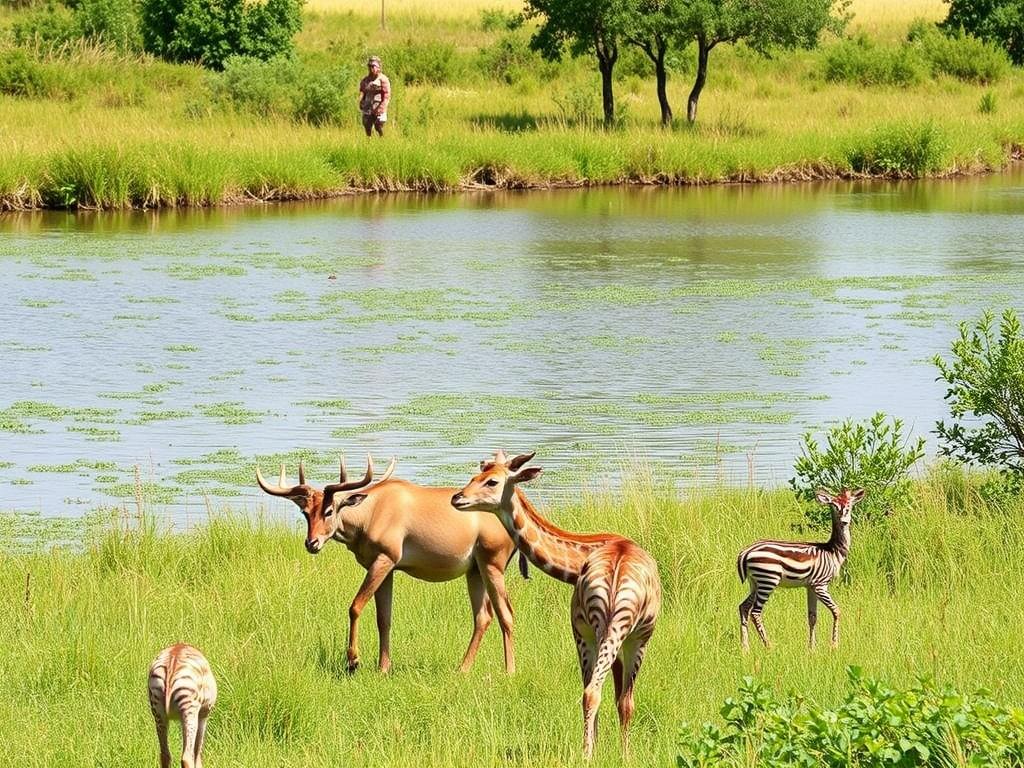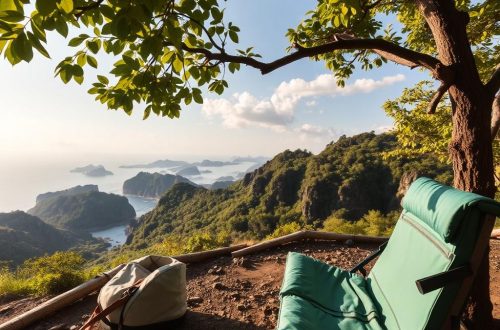
Best Destinations for Wildlife Viewing: Your Ultimate Guide to Nature’s Wonders
When it comes to experiencing the beauty of the natural world, few things are as captivating as wildlife viewing. There is something profoundly moving about observing animals in their natural habitats, witnessing the delicate balance of ecosystems, and marveling at the diversity of life on our planet. Whether you’re an avid photographer, an adventurous traveler, or someone who simply enjoys the tranquility of the outdoors, discovering the best destinations for wildlife viewing can turn a simple trip into a life-changing experience. In this article, we’ll explore some of the most incredible places across the globe where you can immerse yourself in the breathtaking spectacle of nature and its inhabitants.
Each destination offers a unique opportunity to see different species in their natural settings, ranging from vast savannahs teeming with lions and elephants, to lush rainforests filled with colorful birds and elusive mammals. Along the way, you’ll learn practical tips for spotting wildlife, understand the best seasons to visit, and get inspired to plan your own adventure. So, let’s dive into the fascinating world of wildlife watching and explore some of the best destinations out there.
The African Safari: Iconic Wildlife Experiences on the Savanna
No list of best destinations for wildlife viewing would be complete without mentioning the African safari. Africa’s vast landscapes provide unrivaled opportunities to witness some of the world’s most iconic animals, including the Big Five—lion, leopard, elephant, buffalo, and rhinoceros. Countries like Kenya, Tanzania, South Africa, Botswana, and Namibia have earned reputations as top safari destinations.
In the Serengeti National Park in Tanzania and Maasai Mara in Kenya, visitors can experience the dramatic wildebeest migration, one of nature’s most impressive spectacles. During this time, millions of animals traverse the plains in search of greener pastures, facing predators and crossing crocodile-infested rivers. It’s a dynamic, enthralling sight that combines raw survival instincts with the breathtaking beauty of the African wilderness.
Botswana’s Okavango Delta offers another distinct safari experience, where you can explore winding waterways by mokoro (a traditional dugout canoe) and observe hippos, elephants, and crocodiles up close. South Africa’s Kruger National Park is renowned for its diversity and accessibility, allowing travelers to spot everything from cheetahs to rhinos. Namibia’s Etosha National Park is equally spectacular for its arid desert landscapes and watering holes that attract abundant wildlife.
Top Wildlife to See on an African Safari
- Lions prowling the grasslands
- Elephant herds roaming freely
- Majestic leopards resting in trees
- Cheetahs sprinting after prey
- Rhinoceroses grazing near waterholes
- The Great Migration’s wildebeest and zebras
When to Visit for the Best Wildlife Viewing
| Region | Best Months | Why |
|---|---|---|
| Serengeti & Maasai Mara | July to October | Peak migration and predator activity |
| Okavango Delta | May to September | Dry season with concentrated animals along waterways |
| Kruger National Park | May to September | Dry season for easier wildlife spotting |
| Etosha National Park | June to November | Animals gather around waterholes |
Amazon Rainforest: A Diverse Haven for Wildlife Enthusiasts
Moving from the wide open plains of Africa to the lush, mysterious Amazon Rainforest, we step into a world bursting with biodiversity. The Amazon, spanning nine countries, holds one of the richest ecosystems on Earth. For those seeking to observe exotic birds, colorful amphibians, elusive jaguars, and a seemingly endless variety of insects, this is paradise.
Exploring the Amazon is an adventure unlike any other. Guided jungle treks, river cruises, and night safaris offer glimpses of this vibrant wildlife. The rainforest canopy hides some of the most fascinating creatures, and with patience and a keen eye, you can spot sloths hanging lazily from branches or brightly feathered macaws flying overhead. The Amazon is especially notable for its bird watching opportunities, with hundreds of species native to this region.
Must-See Wildlife in the Amazon
- Jaguar – the elusive big cat
- Harpy eagle – one of the most powerful birds of prey
- Green anaconda – the world’s largest snake
- Poison dart frogs – brightly colored and tiny
- Capybara – the world’s largest rodent
- Amazon river dolphins
Best Time to Discover Amazon Wildlife
The optimal time for wildlife viewing in the Amazon depends largely on water levels. The dry months from July to December allow easier access to trails and more concentrated animal activity near shrinking water sources, making spotting easier. Conversely, the wet season (January to June) makes travel tougher but brings out unique behaviors and breeding activities.
Galápagos Islands: A Unique and Pristine Wildlife Experience
For travelers drawn to isolated environments where evolution has taken extraordinary paths, the Galápagos Islands are a must-see destination. Situated in the Pacific Ocean off Ecuador’s coast, this UNESCO World Heritage site dazzles visitors with creatures found nowhere else on Earth. The islands inspired Charles Darwin’s theory of natural selection and remain a living laboratory of biodiversity.
The Galápagos offer an intimate kind of wildlife viewing. Animals like the fearless giant tortoises, marine iguanas sunning themselves on volcanic rocks, and blue-footed boobies performing their quirky mating dances seem unbothered by human presence because they evolved without natural predators. Snorkeling with playful sea lions or watching hammerhead sharks glide beneath crystal-clear waters adds an aquatic dimension to the wildlife adventure.
Iconic Species in the Galápagos
- Giant tortoise – ages over 100 years
- Marine iguana – the only lizard that swims
- Blue-footed booby – famous for its bright feet
- Galápagos penguin – the only penguin species living near the equator
- Flightless cormorant – a unique seabird
When to Visit the Galápagos
| Season | Characteristics |
|---|---|
| December to May | Warm waters, vibrant marine life, and bird nesting season |
| June to November | Cooler waters, better visibility for divers, and whale watching opportunities |
Yellowstone National Park: America’s Wildlife Sanctuary
If you’re looking for a wildlife viewing destination that combines dramatic geothermal landscapes with North America’s iconic animals, Yellowstone National Park is a fantastic choice. Covering over 2 million acres across Wyoming, Montana, and Idaho, Yellowstone is a refuge for species such as bears, wolves, elk, and bison.
The park’s diverse ecosystems—from dense forests to alpine meadows—support an impressive range of wildlife. One of the highlights is witnessing the powerful presence of grizzly bears catching fish in the river or wolves howling in the early morning mist. The famous Yellowstone bison herds are some of the largest and most free-roaming in the world, and spotting a herd grazing against the backdrop of steaming geysers is a truly remarkable experience.
Wildlife Commonly Seen at Yellowstone
- Grizzly and black bears
- Gray wolves
- Bison and elk herds
- Moose and mule deer
- Bald eagles and osprey
- Pronghorn antelope
Best Viewing Seasons at Yellowstone
The best time to visit Yellowstone for wildlife viewing is generally during the spring and early summer (April to June) when animals are most active and newborns are present. Fall (September to October) is also great as animals prepare for winter. Winter offers unique views but can be challenging due to snow and cold conditions.
Australia’s Great Barrier Reef and Outback: Diverse Wildlife from Reef to Desert
Australia presents a fascinating contrast in wildlife viewing destinations, from the underwater spectacle of the Great Barrier Reef to the stark beauty of the Outback’s red deserts. The Great Barrier Reef is not just a marine wonder but also a vital habitat for unique species like dugongs, sea turtles, and a kaleidoscope of fish and coral species. Snorkeling and diving trips provide close encounters with this vibrant underwater world.
In stark contrast, the Australian Outback introduces you to rugged landscapes where iconic animals like kangaroos, emus, and dingoes roam free. The Outback’s remote national parks such as Kakadu and Uluru-Kata Tjuta National Park offer the chance to experience Aboriginal culture alongside extraordinary wildlife viewing.
Australian Wildlife Highlights
- Dugong – gentle sea mammal feeding on seagrass
- Green sea turtle – common in reef waters
- Kangaroo and wallabies
- Emus and cockatoos
- Saltwater crocodiles in northern wetlands
When to Visit Australia for Wildlife Viewing
| Region | Best Months | Why |
|---|---|---|
| Great Barrier Reef | June to November | Clear waters and optimal marine life activity |
| Outback (Northern Territory) | May to September | Dry season with cooler temperatures and easier accessibility |
Borneo Rainforest: Discovering Exotic Wildlife in Southeast Asia
Borneo, the third-largest island in the world, is a treasure trove of exotic wildlife and dense rainforest habitat. It is one of the best destinations for wildlife viewing in Southeast Asia, home to species found nowhere else on earth. The island’s diverse ecosystems—from mangrove swamps to mountainous rainforests—support a fascinating variety of creatures including orangutans, pygmy elephants, and proboscis monkeys.
Wildlife lovers can explore protected areas such as Sabah’s Kinabatangan River and Sarawak’s Mulu National Park. Night safaris and river cruises are excellent ways to spot nocturnal animals and vibrant birdlife.
Key Wildlife Species in Borneo
- Orangutans – our closest relatives in the animal kingdom
- Pygmy elephants – smaller than mainland elephants
- Proboscis monkeys – known for their distinctive noses
- Clouded leopards
- Hornbills and other colorful birds
Best Time to Visit Borneo for Wildlife
The dry season from March to October is ideal for wildlife viewing in Borneo. During this time, animals are easier to spot as they come down to rivers and water sources to drink.
Wildlife Viewing Tips: Making the Most of Your Trip
Planning a trip to one of these best destinations for wildlife viewing can be exciting but requires some preparation to maximize your chances of success. Here are some practical tips to enhance your wildlife experience:
- Research the Best Time to Visit: Animals have seasonal patterns, including migration, breeding, and feeding. Visiting during peak activity seasons increases your viewing opportunities.
- Hire Experienced Guides: Local guides have knowledge of animal behavior and habitats, increasing your chances of sightings while ensuring ethical and safe interactions.
- Bring Appropriate Gear: Binoculars, camera with a zoom lens, and comfortable clothing in natural hues are essential for wildlife watching.
- Be Patient and Quiet: Wildlife is sensitive to noise and sudden movements. Patience and a hushed presence often yield the best encounters.
- Respect Nature: Always maintain a safe distance, avoid feeding animals, and follow park rules. Conserving habitats ensures these destinations remain vibrant for future travelers.
- Consider Lower-Impact Accommodations: Eco-lodges and sustainable tours minimize your footprint and help support conservation efforts locally.
Summary Table: Best Destinations for Wildlife Viewing at a Glance
| Destination | Key Wildlife | Best Time to Visit | Unique Features |
|---|---|---|---|
| African Safari | Big Five, Great Migration | July to October (varies by park) | Vast savannahs, iconic predators |
| Amazon Rainforest | Jaguar, macaws, river dolphins | July to December | Dense jungle, unparalleled biodiversity |
| Galápagos Islands | Giant tortoise, marine iguana | December to May or June to November | Unique evolutionary habitats |
| Yellowstone National Park | Grizzly bears, wolves, bison | April to June; September to October | Geothermal features, North American wildlife |
| Australia (Reef & Outback) | Dugong, kangaroo, saltwater crocodiles | June to November (Reef); May to September (Outback) | Marine and desert wildlife diversity |
| Borneo Rainforest | Orangutans, pygmy elephants | March to October | Exotic species, dense tropical forests |
Conclusion
Embarking on a journey to the best destinations for wildlife viewing is more than just a vacation—it’s a deep connection with the natural world that can inspire, educate, and transform. From the timeless awe of the African safari to the enigmatic wild encounters in the Amazon, from the evolutionary wonderland of the Galápagos to the rugged diversity of Yellowstone and beyond, each location offers something truly special. These places remind us of the richness of life and our responsibility to protect it. Whether you’re gazing across a golden savanna, peering into a dense rainforest, or snorkeling alongside curious sea creatures, the magic of wildlife viewing enriches the soul and creates memories that last a lifetime. So pack your binoculars, charge your camera, and set out to witness the planet’s incredible diversity—it’s waiting for you.




